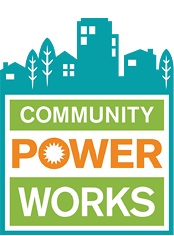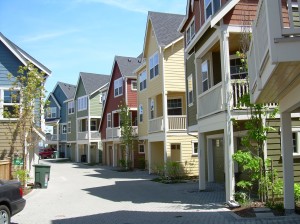I recently learned of a company that has entered the Pacific Northwest home+energy market, called Energy Savvy. They have been contracted by the City of Seattle to provide a method to roll out affordable energy efficiency upgrades to home owners. It’s called Community Power Works. A press release in April provides the meat of the matter, but here is a brief summary:
Community Power Works for Home plans to upgrade 2,000 homes in its service area over the next two years. The project serves the central and southeast neighborhoods of Seattle, areas which have historically been underserved by energy efficiency programs. It will give residents of those neighborhoods an affordable way to make their homes more comfortable and healthy while making energy-efficient upgrades to their homes.

“Our leaky old houses waste so much energy, it’s like having a window open 24 hours a day, every day of the year,” says contractor Jason Lear, of Batt + Lear, a Seattle green design/build company. “We find our customers like having a home that is far less drafty. They had no idea how much more comfortable they could be in their home, in winter and in summer. And what so many people don’t know is that when you improve the energy savings of a home, you inevitably improve the comfort, the durability and the health of the home, too. ”
Community Power Works for Home is part of a $20 million American Recovery and Reinvestment Act grant awarded through the Department of Energy’s BetterBuildings program. Over a two-year period, Community Power Works is leveraging these federal dollars to produce an additional $25 million in economic activity in the region from state funding, utility rebates, and homeowner investments in their homes. All of this investment will put a charge into a local green industry to preserve and create hundreds of living–‐wage jobs, help homeowners save energy, and reduce the City’s carbon footprint.
(read the whole press release here.)
Community Power Works offers:
- A deeply discounted home energy assessment. Thanks to incentives from Seattle City Light, this assessment costs only $95 – a $305 savings.
- Certified contractors to do the work.
- Rebates and incentives to bring down the cost of your upgrade by up to $3,000.
- Affordable loans with easy terms to qualify.
- Energy Experts to help you every step of the way and make sure the job is done right.
From their website:
Community Power Works is offered by the City of Seattle with funding provided by the U.S. Department of Energy. The goal of the program is to achieve energy savings of at least 15 percent in each home served. The special incentives and financing are available only to projects that meet or exceed this savings level.
See if your house is inside the coverage area – map here.
What all of this means is that you need to jump on this opportunity if you are within the area served. Not only will you save money on your utility bills (I know you keep hearing this over and over) but what it ALSO does it make your home more sell-able in the future.
I can talk about this all day. If you’re interested in learning more about this whole concept of a “house as a building system” and nothing more, and how to improve your current home, please talk to me. Send an email using the button on the right, message on Facebook, or call me at 206.686.HOME (4663).
Thanks! and have a wonderful weekend!
Wendy Hughes-Jelen


